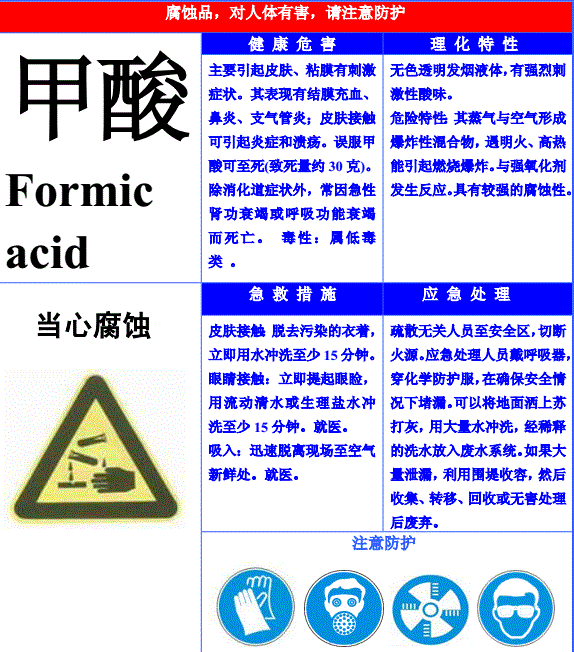chromatography with formic acid vs without formic acid
Differences and Benefits
Chromatography is an essential technique for separating, identifying, and analyzing components in a mixture. When it comes to optimizing performance, the choice of additives in the mobile phase plays a critical role. Formic acid, a common additive, influences separation efficiency and compatibility with detection methods like mass spectrometry. But how does chromatography with formic acid compare to setups without it? Including formic acid can improve ionization efficiency and sensitivity, especially in LC-MS workflows, yet it may also introduce challenges like pH instability or peak tailing. Understanding these trade-offs ensures better decisions for specific analytical needs.
What is Chromatography?
Chromatography is a cornerstone technique in analytical chemistry, widely used to separate components in a mixture. Whether you’re testing for impurities, analyzing environmental samples, or ensuring product consistency, chromatography offers unmatched precision and versatility. Its applications span industries, from pharmaceuticals to food safety, making it a universal tool in scientific analysis.
How Does Chromatography Work?
At its core, chromatography functions on the principle of separation. A mixture is dissolved in a mobile phase (which can be a gas or liquid) and passed through a stationary phase (a solid or viscous liquid). Components of the mixture travel at different speeds, primarily based on their interactions with both phases. This difference allows for the separation and identification of individual compounds.
For example, think of chromatography as sorting coins by rolling them down a slope—they move at different speeds depending on their weight and friction, ultimately separating into distinct groups.

Types of Chromatography Techniques
Chromatography techniques are specialized based on the mixture type, the phases used, and the purpose of analysis. Here are some commonly used methods:
- Liquid Chromatography (LC): Ideal for separating components in liquid mixtures. It’s often enhanced with formic acid to optimize ionization for mass spectrometry detection.
- Gas Chromatography (GC): Used primarily for volatile compounds. It separates components based on their boiling points and interactions with the stationary phase.
- Thin-Layer Chromatography (TLC): Simple and cost-effective, it’s used for quick analysis and comparison of mixture components.
- High-Performance Liquid Chromatography (HPLC): A highly sensitive variant of liquid chromatography, often used in pharmaceutical and environmental testing.
Each of these methods has unique advantages, depending on the analysis required, offering researchers tailored solutions for their needs. Check out this comprehensive guide to chromatography for more detail.
| Step | Details |
|---|
| 1. Instruments & Equipment | Gas Chromatography (GC): – Equipped with Flame Ionization Detector (FID) or Mass Spectrometer (MS). – Polar capillary column (e.g., polyethylene glycol-based). High-Performance Liquid Chromatography (HPLC): – Equipped with UV Detector, Refractive Index Detector (RID), or Conductivity Detector. – Reverse-phase column (e.g., C18) or ion-exclusion column for acidic compounds. |
| 2. Sample Preparation | – For liquid samples: Direct dilution with ultrapure water or an appropriate solvent. – For complex samples: Pre-treatment may include filtration, centrifugation, or liquid-liquid extraction to remove interfering substances. |
| 3. Method Development & Parameters | Gas Chromatography (GC): – Derivatization (if needed): Convert formic acid into its methyl ester (e.g., using methanol and sulfuric acid) for better volatility and detection. – Temperature Program: Starting at 40-60°C, ramping at 10-20°C/min, final temperature ~200°C. – Detector Parameters: Optimize hydrogen and air flow for FID or use characteristic ions (e.g., 46 m/z for formic acid) in MS. – Injection Mode: Split mode; adjust split ratio based on sample concentration. HPLC: – Mobile Phase: Water-acetonitrile or water-methanol mixtures, often with 0.1% formic acid for pH adjustment. – Flow Rate: Typically 0.5-1.0 mL/min. – Detection Wavelength: UV detection around 210 nm (if using UV) or conductometric detection for ions. |
| 4. Calibration & Quantification | – Standard: High-purity formic acid (≥99.9%). – Calibration Curve: Prepare a series of known concentrations (e.g., 0.1 mM to 10 mM or ppm range). – Quantification Method: External standard method or internal standard method (e.g., acetic acid as an internal standard). |
| 5. Data Analysis | – Calculate formic acid concentration using the calibration curve. – Ensure adequate separation from other components in the sample. – Peak resolution (R value) should be > 1.5 to confirm accuracy. |
| 6. Common Issues & Solutions | – Poor Peak Shape: Check for contamination or optimize injection parameters. – Low Sensitivity: Verify detector settings and consider derivatization (GC) or pH adjustment (HPLC). – Interfering Peaks: Adjust temperature program (GC) or mobile phase composition (HPLC) for better separation. |
Applications in Everyday Science
Chromatography impacts numerous fields. In food testing, it’s used to detect pesticide residues. In drug development, it ensures the purity and potency of pharmaceuticals. Environmental scientists use it to monitor water and air quality. Its versatility even extends to forensic toxicology, where it helps identify substances in criminal investigations.
For instance, when additives like formic acid are included in liquid chromatography processes, the results often demonstrate enhanced separation and improved sensitivity, especially in formic acid applications. This optimization is particularly beneficial when paired with detection systems like mass spectrometry.
Why Formic Acid Matters in Chromatography
Formic acid plays a critical role as a pH modifier and ion-pairing agent in chromatography setups. It improves peak shape and resolution, especially in the analysis of acidic compounds. Studies show significant performance differences when formic acid is excluded from the chromatography process, impacting both sensitivity and accuracy. Explore relevant data about formic acid and its uses here.
Chromatography remains vital to modern science and industry, where precision and accuracy in identifying and separating components are non-negotiable. Besides its technical prowess, the method’s adaptability ensures its enduring importance in advancing analytical and applied sciences.






